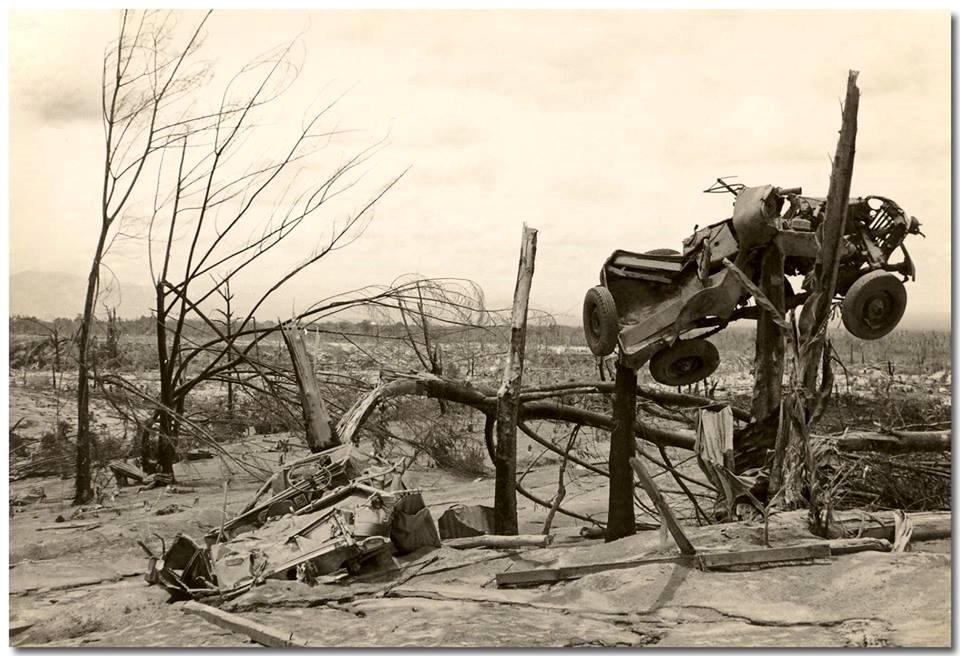Yesterday marked 70 years since the eruption of Mt. Lamington in Northern Province that killed 4000 people. The eruption on the 21st of January 1951 destroyed everything within a 12 kilometre radius.
It was the worst disaster since the end of World War Two.
While at one level, it is a solemn occasion. It is the remembrance of 4000 men, women and children who died. It is also a celebration of life, and for the devout Anglican communities, a resurrection and a revival.
“I’ll tell you about my clan,” says Winterford Suharupa, a former NBC broadcaster from Hohorita. “My whole clan was wiped out. Only two people survived. My father and his brother. Both of them were out of the province.”
“We lost everything. I wish the people who were there could tell you the stories. I wish the man who ran from the foothills to the administration center was here to tell you his story. But he is gone.”
Hohorita is a village that grew from a post eruption settlement. The people originally come from the foothills of the volcano. After their villages were destroyed, the survivors were resettled here. The traditional owners of the land were kind and generous, the survivors said.
A lot of the history about the Mt. Lamington eruption has to be rediscovered.
After 70 years, records on the Papua New Guinea side, still remain part of oral history that has to be drawn from the mental archives of the elders who are in possession of it.
All of the survivors of the lamington eruption are in their 70s and 80s. At Kiorota village, two of four survivors told of their experiences. Avari Lucien Koiembo, was eight-years-old when he was scolded by his brother-in-law and told to flee from the eruption.
“I saw very thick dust and it was rolling down the mountain. The mountain exploded like a bomb.”
Rediscovering that history has been like putting together pieces of a puzzle.
When you speak to the elders, you get to understand the unimaginable pain they went through. Some were very young when it happened.
Koiembo is now 78. He fled with his younger niece and nephew when the sky became pitch black in mid afternoon.
“It was dark for three hours. It wasn’t night. The ash had covered up the sky. We couldn’t see anything. The clothes people wore become so heavy with the wet ash, that it fell off.”
The disaster not only destroyed villages and the environment. It killed whole clans and families. At eight-years-old, Avari Lucien Koiembo, lost his entire clan.
“If you speak to the local people within the vicinity of the volcano, their stories suggest that the number of those who perished is higher that what has been estimated,” Says Northern Province Governor, Gary Juffa. Our oral history needs to be better documented.”
For the colonial administration, the Mt. Lamington eruption triggered the biggest post war relief operation. The first team into the disaster stricken area was led by former soldier and Kiap, John Desmond ‘Des’ Martin, Patrol Officer, Bob Blaikie and volcanologist, Tony Taylor.
Des Martin was honored by the Papua New Guinea Government with Logohu award. Before he passed away in 2018, he wrote describing horrific scenes where hundreds of people lay dead after the eruption.
Tony Martin’s work studying the Mt. Lamington volcano identified safe zones where the administration could conduct the rescue operation. His work is still classed as one of the best studies of an active volcano. He died on Manam Island in 1972.
For people in Northern Province, Anglican missionaries led by Bishop David Hand are still held in high regard for their work in rebuilding the communities devastated by the disaster.


